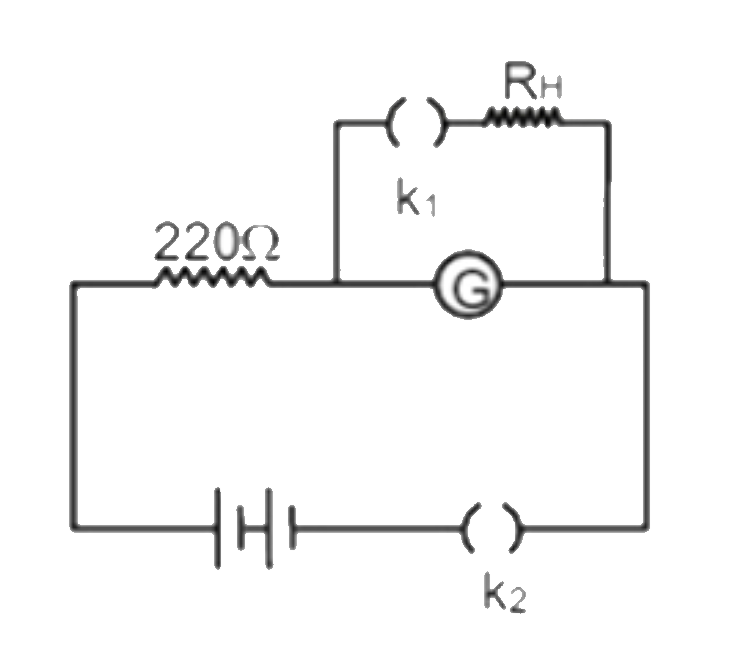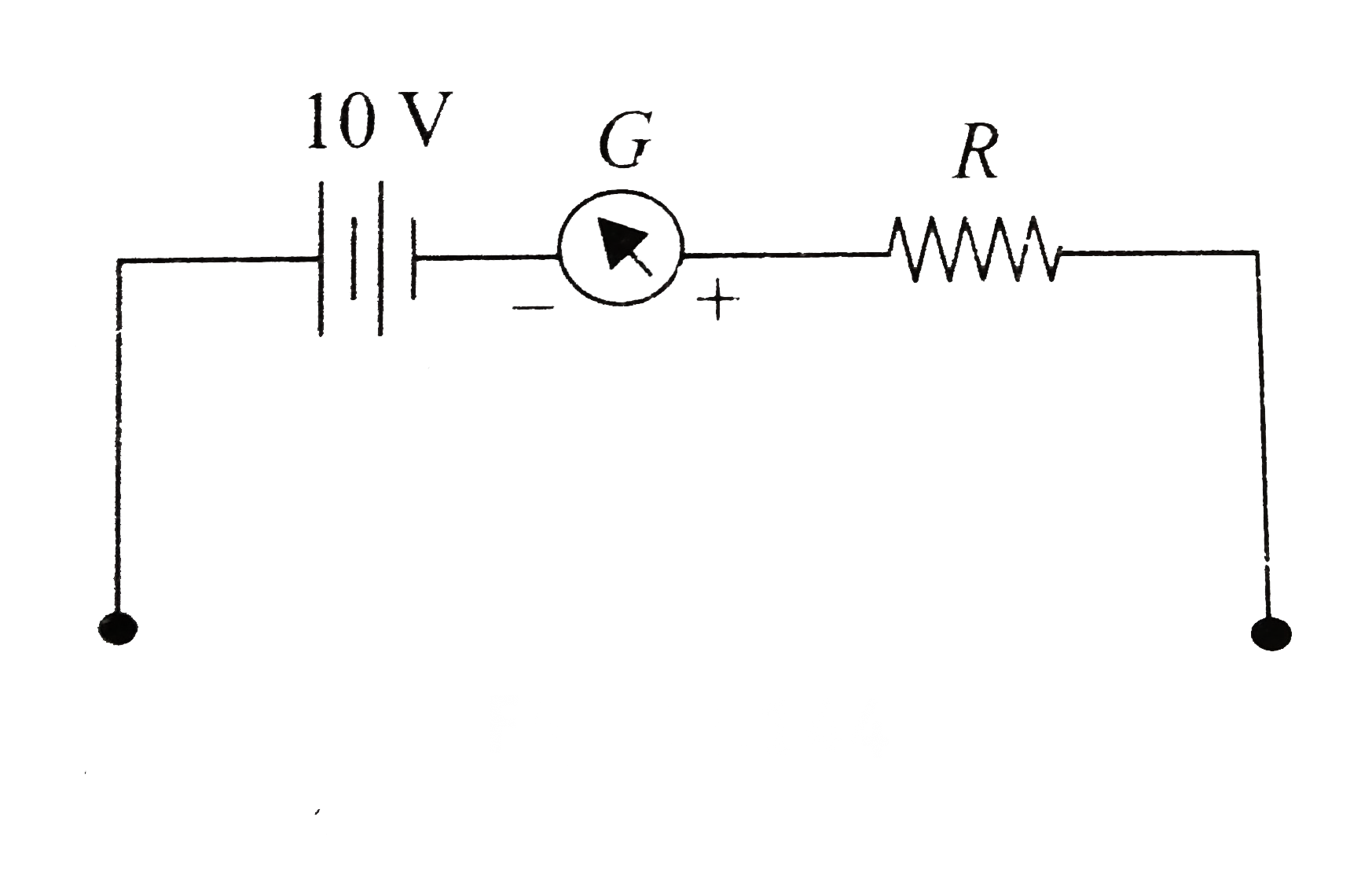TANGENT GALVANOMETER
capacitance
current
resistance
potential difference
Step-by-Step Solution:
1. Understanding the Tangent Galvanometer:
- A tangent galvanometer is a device used to measure electric current. It consists of a circular coil of wire and a compass needle. When an electric current passes through the coil, it generates a magnetic field.
2. Principle of Operation:
- The tangent galvanometer operates on the principle that the magnetic field produced by the current in the coil interacts with the Earth's magnetic field. The angle of deflection of the compass needle is proportional to the tangent of the angle between the magnetic field due to the current and the Earth's magnetic field.
3. Identifying the Measurement:
- The primary function of the tangent galvanometer is to measure the strength of the electric current flowing through the coil. The deflection of the compass needle indicates the amount of current.
4. Analyzing the Options:
- Option A: Capacitance - The tangent galvanometer does not measure capacitance.
- Option B: Current - This is the correct option, as the tangent galvanometer is specifically designed to measure electric current.
- Option C: Resistance - The tangent galvanometer does not measure resistance.
- Option D: Potential Difference - The tangent galvanometer does not measure potential difference.
5. Conclusion:
- Based on the analysis of the options, the correct answer is Option B: Current.
- A tangent galvanometer is a device used to measure electric current. It consists of a circular coil of wire and a compass needle. When an electric current passes through the coil, it generates a magnetic field.
- The tangent galvanometer operates on the principle that the magnetic field produced by the current in the coil interacts with the Earth's magnetic field. The angle of deflection of the compass needle is proportional to the tangent of the angle between the magnetic field due to the current and the Earth's magnetic field.
- The primary function of the tangent galvanometer is to measure the strength of the electric current flowing through the coil. The deflection of the compass needle indicates the amount of current.
- Option A: Capacitance - The tangent galvanometer does not measure capacitance.
- Option B: Current - This is the correct option, as the tangent galvanometer is specifically designed to measure electric current.
- Option C: Resistance - The tangent galvanometer does not measure resistance.
- Option D: Potential Difference - The tangent galvanometer does not measure potential difference.
- Based on the analysis of the options, the correct answer is Option B: Current.
Topper's Solved these Questions
- BOOK - DC PANDEY ENGLISHCHAPTER - MAGNETISM AND MATTEREXERCISE - 5.315videos
MAGNETISM AND MATTER
- BOOK - DC PANDEY ENGLISHCHAPTER - MAGNETISM AND MATTEREXERCISE - Medical gallery1videos
MAGNETISM AND MATTER
- BOOK - DC PANDEY ENGLISHCHAPTER - MAGNETISM AND MATTEREXERCISE - 5.115videos
MAGNETISM AND MATTER
- BOOK - DC PANDEY ENGLISHCHAPTER - MAGNETICSEXERCISE - MCQ_TYPE1videos
MAGNETICS
- BOOK - DC PANDEY ENGLISHCHAPTER - MODERN PHYSICSEXERCISE - Integer Type Questions17videos
MODERN PHYSICS
Similar Questions
A battery of emf 12 V and internal resistance 2Ω is connected in series with a tangent galvanometer of resistance 4Ω . The deflection is 60∘ when the plane of the coil is along the magnetic meridian . To get a deflection of 30∘, the resistance to be connected in series with the tangent galvanometer is
View Solution(A) : The tangent galvanometer can be made more sensitive by increasing the number of turns of its coil.
(R) : For a given P.D current through galvanometer is inversely proportional to the number of turns of coil.View SolutionWhich of the following statements is correct ?
A. Magnetic field due to earth changes with time and position
B. For paramagnetic material magnetic susceptibility is negative
C. Tangent galvanometer is used to measure power loss
D. ∮→B⋅→ds may be non zero quantityView SolutionDeflection of galvanometer in the circuit is 71 divisions. A shunt of 15Ω is connected parallel to galvanometer and value of R is adjusted such that main current ramains the same. If the deflection in the galvanometer falls to 15 divisions then the resistance G of galvanometer in (in ohm)
 View Solution
View SolutionThe deflection in moving coil galvanometer is reduced to half when it is shunted with a 40Ω coil . The resistance of the galvanometer is
View Solution(A) : A galvanometer can be used as an ammeter and Voltmeter.
(R) : A galvanometer cannot be used in electric circuit to detect the direction of electric current.View SolutionThe senstivity of a galvanometer that measures current is decreased by 1/40 times by using shunt resistance of 10Ω . Then, the value of the resistance of the galvanometer is
View SolutionAs shown in the figure initially switch k1 is open and k2 is closed and deflection of galvanometer is x. Now both switch are closed then the deflection in galvanometer is x/5 (given RH=5Ω). The resistance of galvanometer is
 View Solution
View SolutionAn ohm meter measures the resistance placed between its leads. This resistance reading is indicated by a galvanometer that operates on current. The ohm meter has an internal source of voltage to create the necessary current to operate the galvanometer and also has approproate resistor to allow just right amount of current through galvanometer. A simple ohm meter is shown here.

When there is an infinite resistance, there is zero current through galvanometer and it points in middle. If the test leads of this meter are directly shorted, (zero resistance) galvanometer will give full deflection.
Galvanometer specification
Resistance of galvanometer =100Ω
Fullscale current =0.5mA
Total number of division =40 .
View SolutionThe resistance of galvanometer is 999Ω. A shunt of 1Ω is connected to it. If the main current is 10−2A, what is the current flowing through the galvanometer.
View Solution

